In a tumultuous match that marked Julian Nagelsmann‘s home debut as Germany’s head coach, the team faced a chaotic showdown against Türkiye, resulting in their first loss under Nagelsmann’s leadership.
The Olympiastadion in Berlin, though technically a home ground, felt like an away game.
Apart from the result, one noteworthy talking point from the game was Nagelsmann’s unconventional deployment of Arsenal’s Kai Havertz as a left-back.
Evidently anticipating the ensuing controversy, Nagelsmann preemptively clarified his choice to field Havertz in a wide position before the match:
“We have different formations depending on how high the opponent stands and defends. Kai won’t always be in that position; I have a lot of ideas for him because he is an excellent footballer. It’s an excellent option. He won’t always play as the classic left-back that you might know.”
As we will see in this analysis, Havertz, traditionally an attacking midfielder, found himself positioned in a defensive role, a departure from his usual deployment.
This shift prompts a closer examination of Nagelsmann’s tactics and
Kai Havertz‘s adaptabilityin a new position.
This tactical analysis
, which is a scout report,is essential to dissect how Havertz navigates and contributes to Julian Nagelsmann‘s tactical framework from the left-back position.
Kai Havertz Left-back Position
On the left flank, contenders for the role include David Raum from Leipzig and Robin Gosens from Union Berlin.
However, Raum faced challenges in convincing at the highest level during the World Cup in Qatar, while Gosens has experienced a dip in form since his move to Union.
Moreover, both players are perceived to lack defensive qualities, and their strengths shine more prominently in a three-man defensive chain, a setup that has seen unsuccessful trials in the DFB team on multiple occasions.
Nagelsmann deserves acknowledgement for attempting to integrate Havertz into his system, but with the emergence of talents like Jamal Musiala and Florian Wirtz and the resurgence of Sané, finding a suitable role for Havertz in the German setup is becoming increasingly challenging.
Previously considered a potential centre-forward for Germany, that path appears to be closed as Füllkrug continues his goal-scoring spree.
The Dortmund striker notched his tenth goal in just his 12th appearance.
Given his undeniable talent and the need for him to be a crucial part of Julian Nagelsmann’s plans, it’s imperative to identify a fitting role for Kai Havertz.
Consequently, Havertz could play a more advanced role in the German back four, especially when in possession, akin to the role Alphonso Davies played at FC Bayern under Nagelsmann.
The DFB head coach emphasised, “Kai has everything in terms of size, speed, quality, and a sense of responsibility to play such an offensive role.”
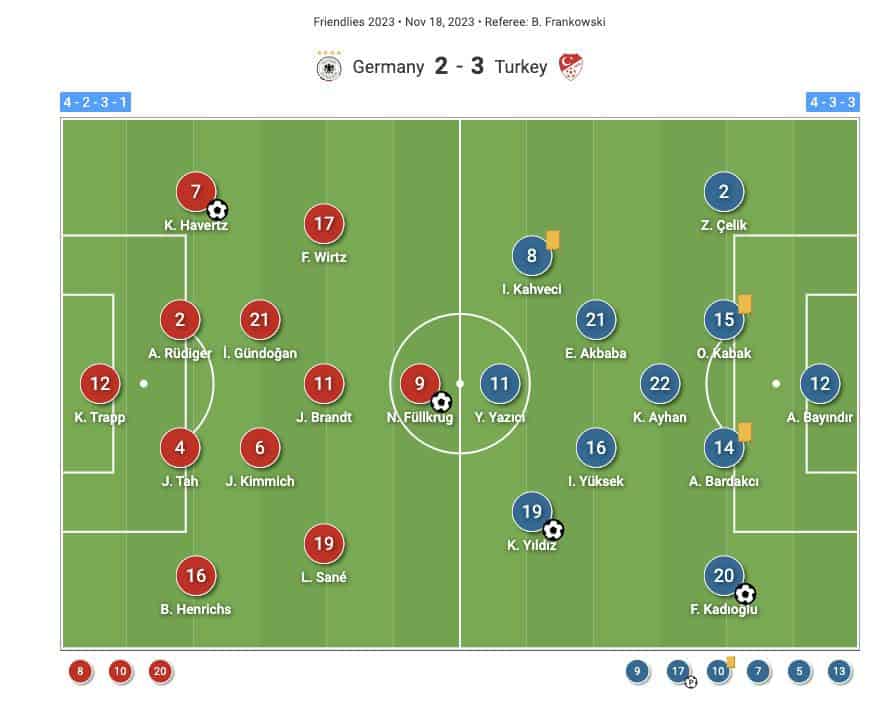
Kai Havertz Style Of Play
Deployed as a left back in Germany’s tactical setup, Kai Havertz assumed a natural LB position off the ball, forming part of a 4-2-3-1 shape.
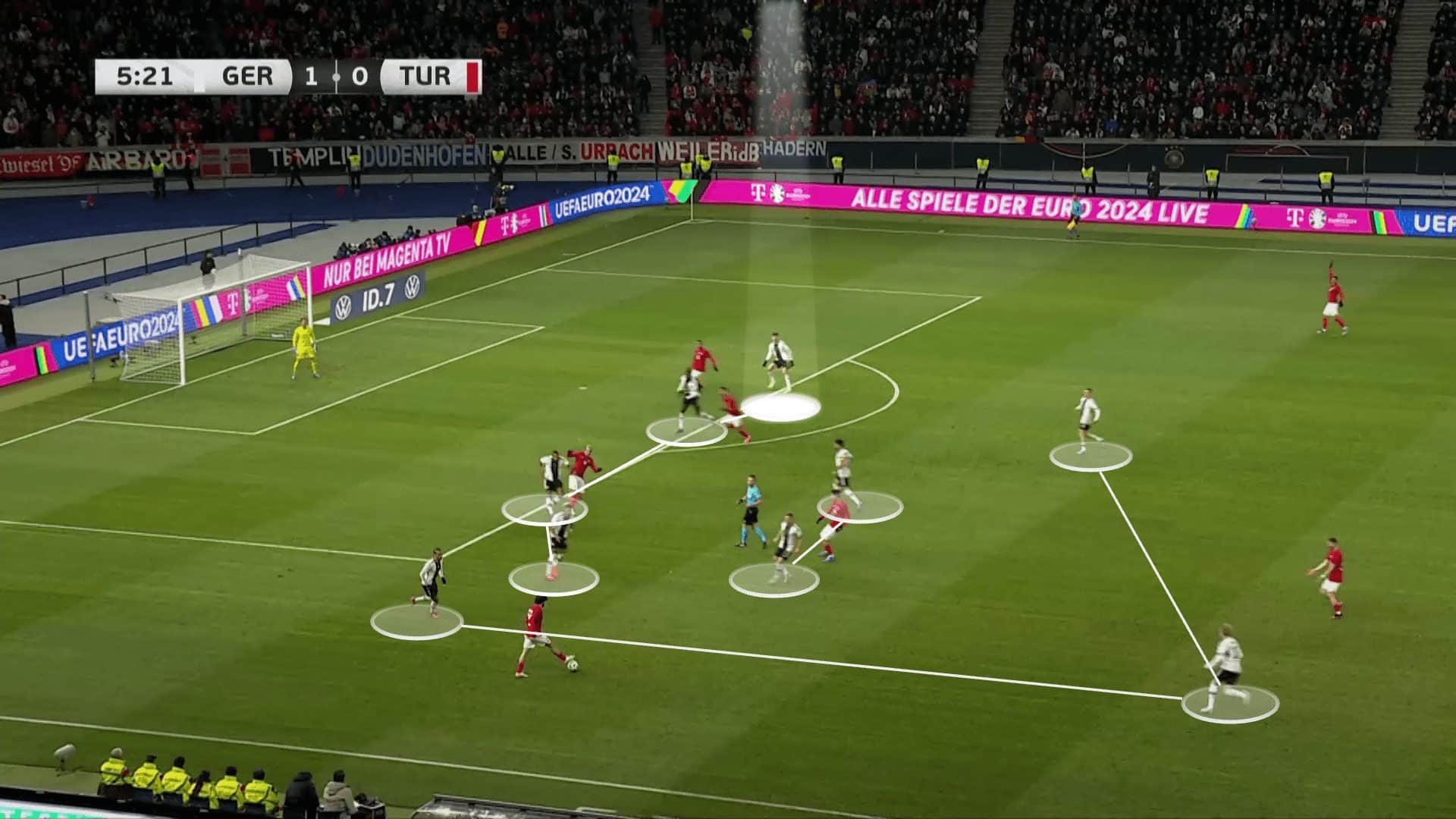
However, when in possession, his role becomes more advanced, resembling that of the left midfielder or winger in a 3-2-4-1 shape.
In this position, Havertz endeavours to make runs into the box after the primary runners.
Kai Havertz Heat Map
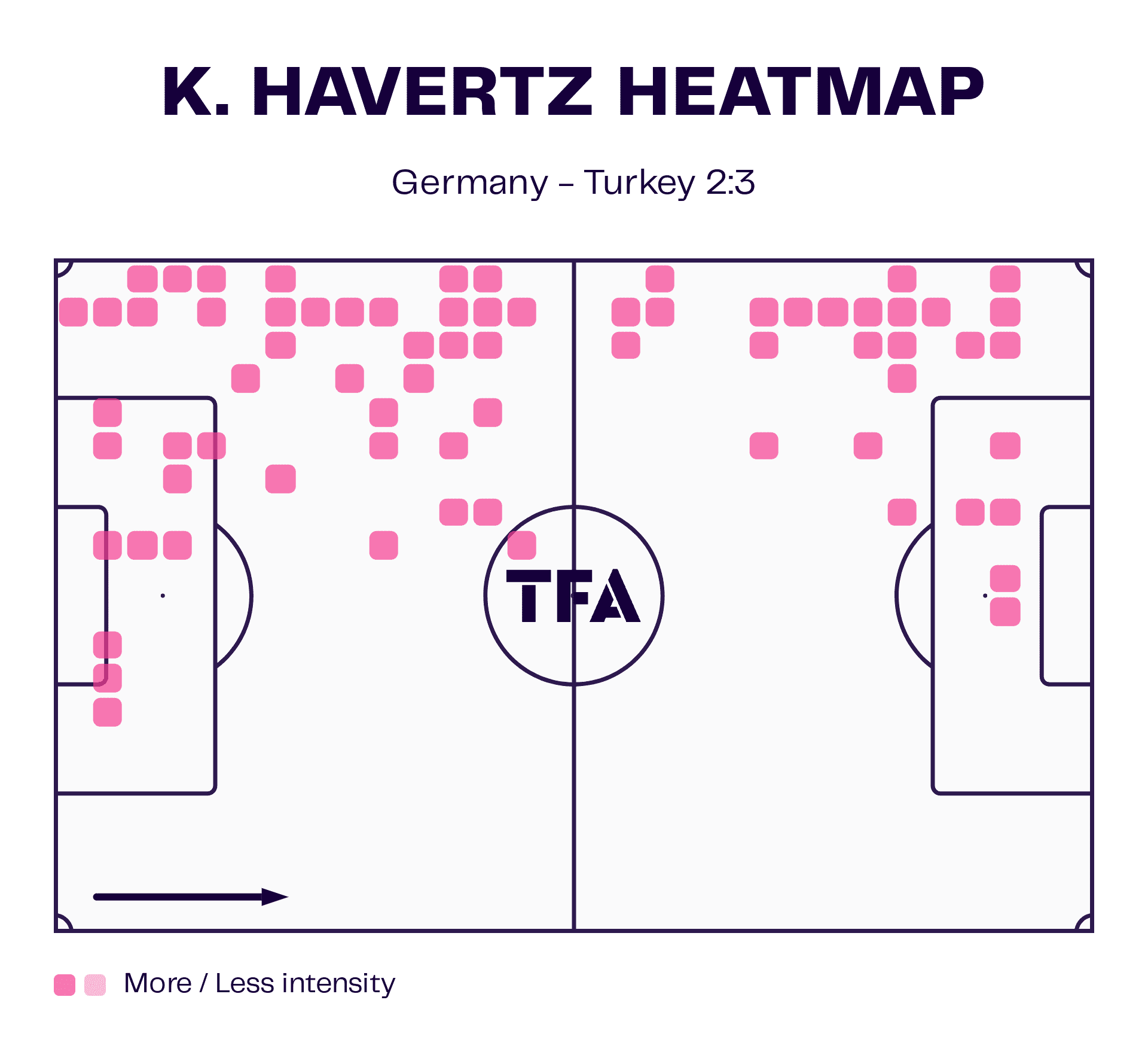
One notable challenge with placing Havertz wide left is his lack of speed, which makes him less effective in one-on-one situations.
His crossing ability is not a standout feature.
When he receives the ball, attacks sometimes reach a dead end, leading to backward ball movement.
Despite these limitations, Kai Havertz excels at finding space on the field.
Kai Havertz Pass Map
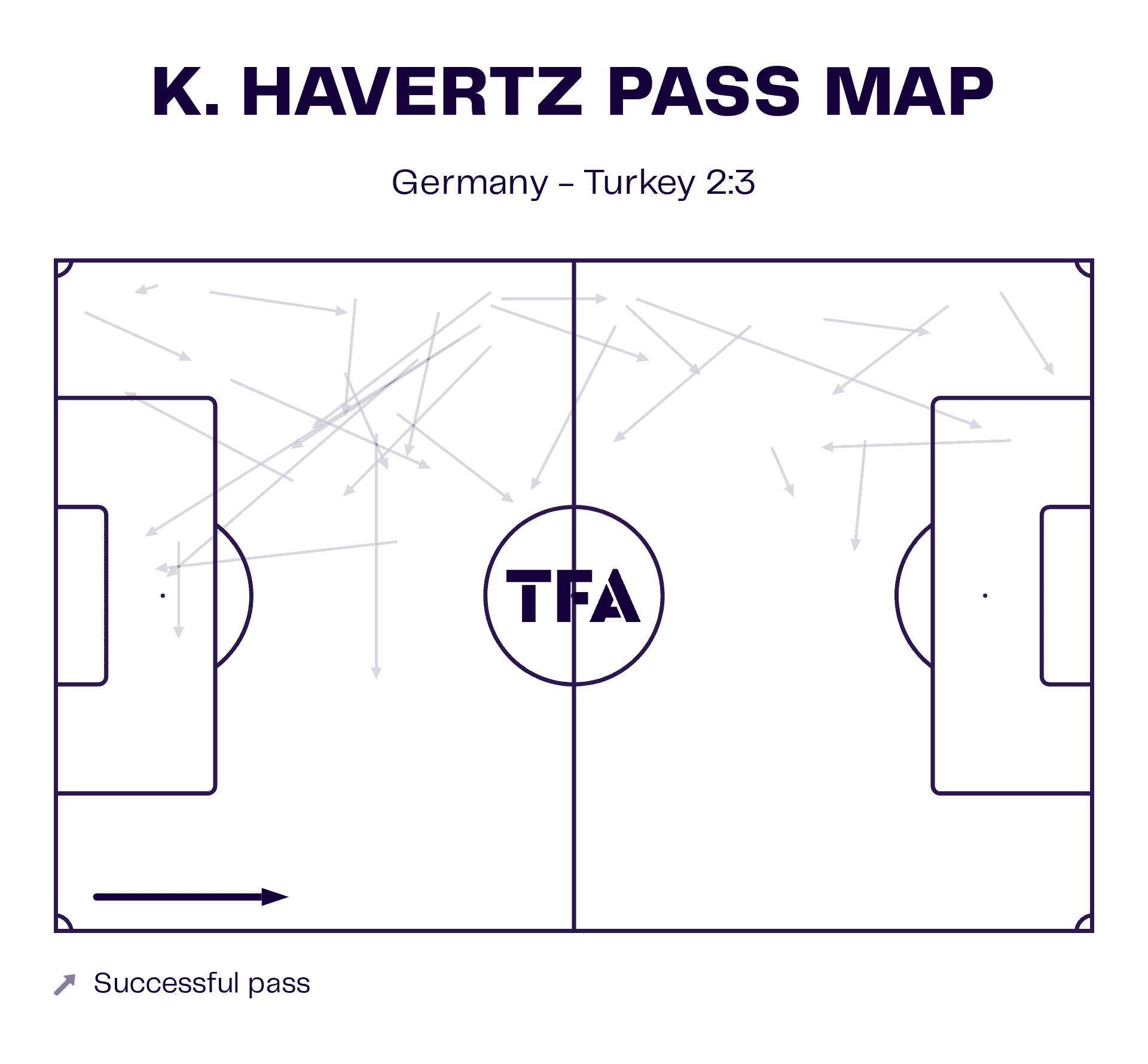
The decision to position Havertz wide left seems to stem from the desire to incorporate his attacking qualities into the squad.
Managers are keen on having him in the starting lineup, recognising his intelligence and hoping it translates into impactful on-field contributions.
Havertz’s role didn’t conform to the classic left-back archetype during the game.
Instead, Germany’s formation took on the appearance of a back three, with Havertz assuming a role akin to an inverted winger.
His positioning involved pushing up, serving to counter-balance an attack that heavily leaned towards the right flank, featuring Füllkrug and Leroy Sané.
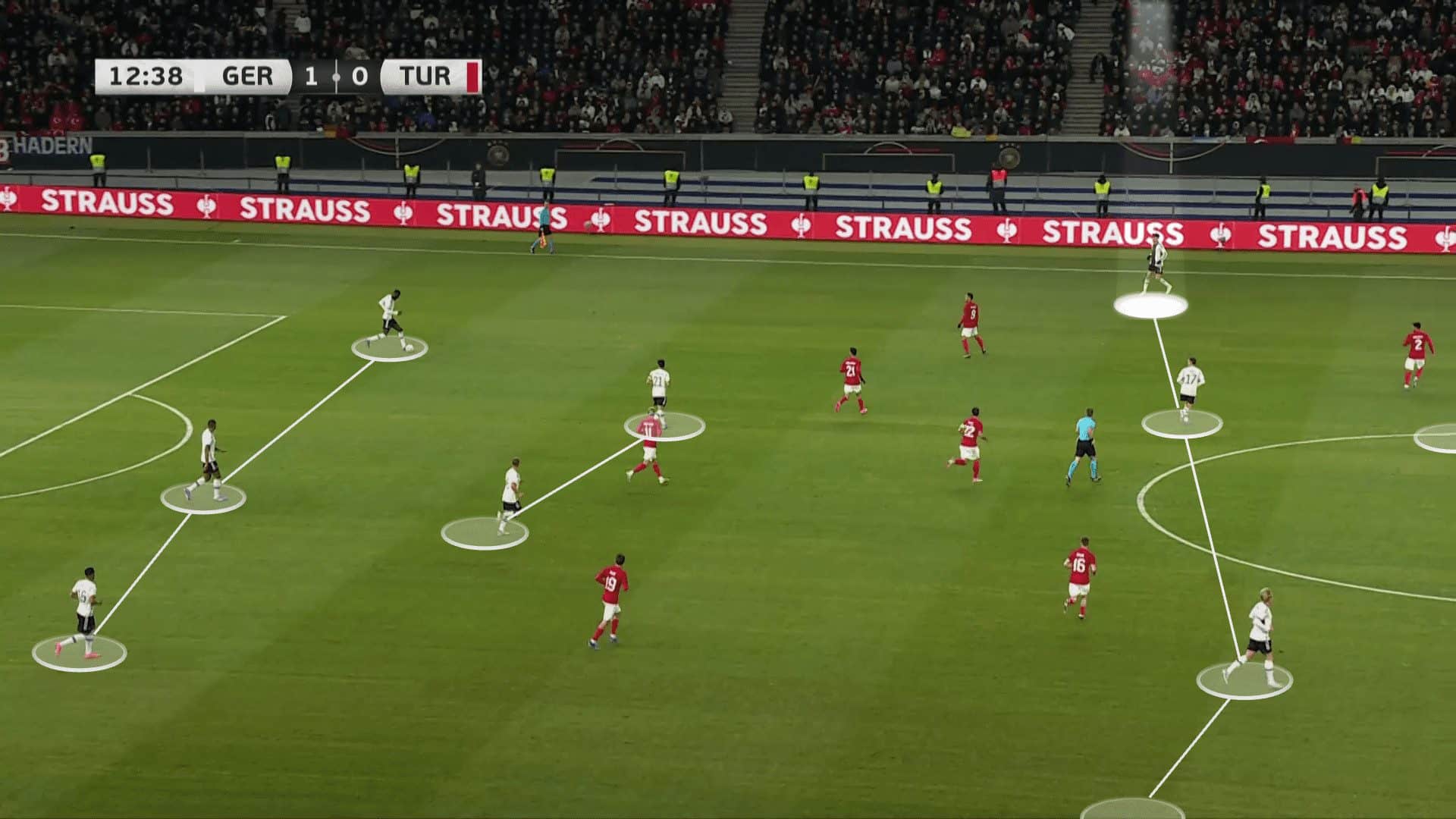
In his role as left-back against Türkiye, Kai Havertz’s performance showcased a mix of positives and challenges.
While he didn’t have an extensive number of touches or face frequent tests, he handled the tasks assigned by Turkish attacks decently and tracked his man effectively.
Notably, Kai Havertz contributed to Germany’s scoreline by scoring a goal, positioning himself intelligently in the box, and receiving a well-executed cutback from Sane.
Kai Havertz Shots Map
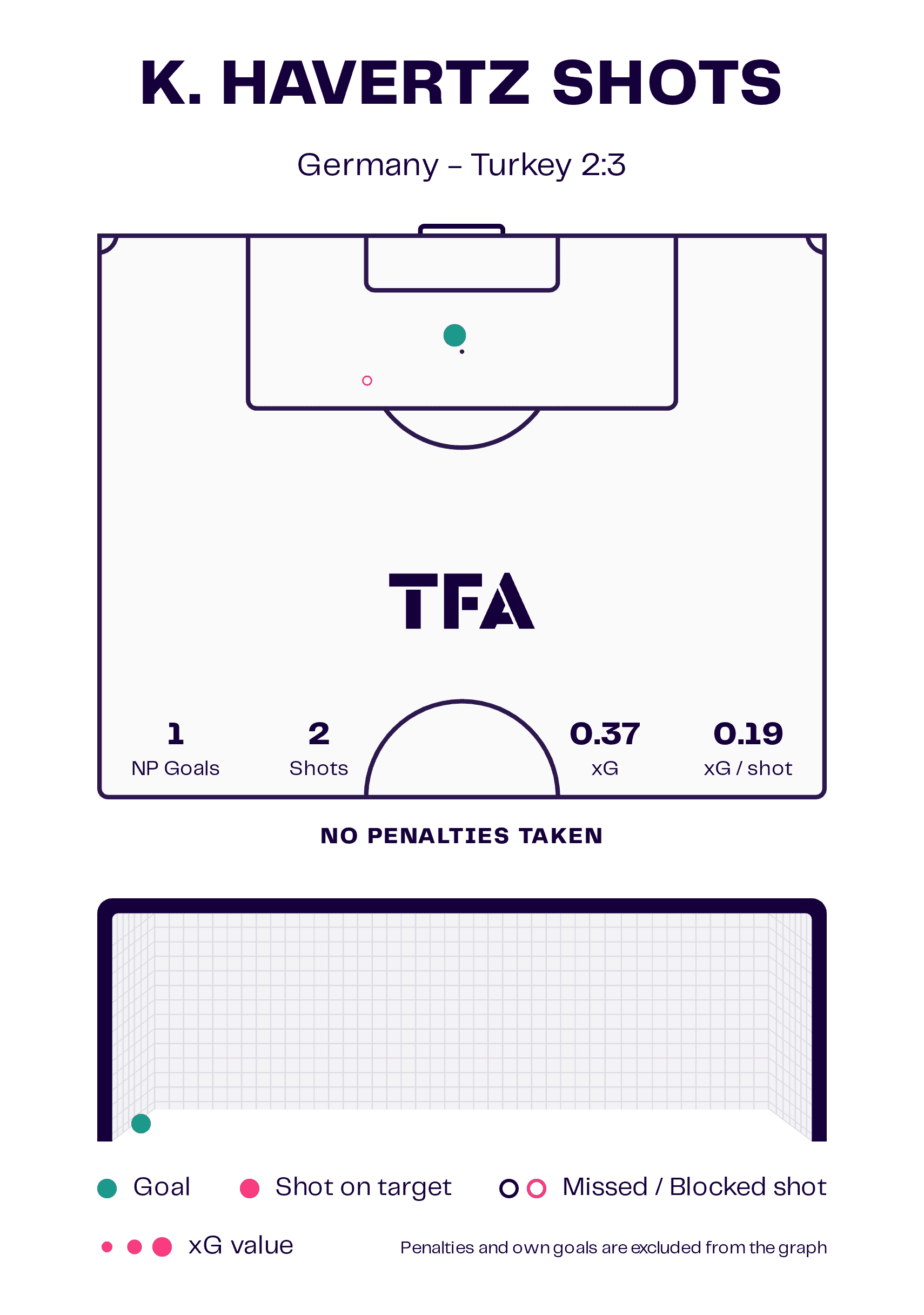
The decision to deploy Havertz in this position didn’t result in a direct defensive catastrophe, as other factors contributed to Germany conceding goals, both of which came from the opposite flank.
Havertz demonstrated defensive commitment by tracking back to the left-back position when Germany was out of possession.
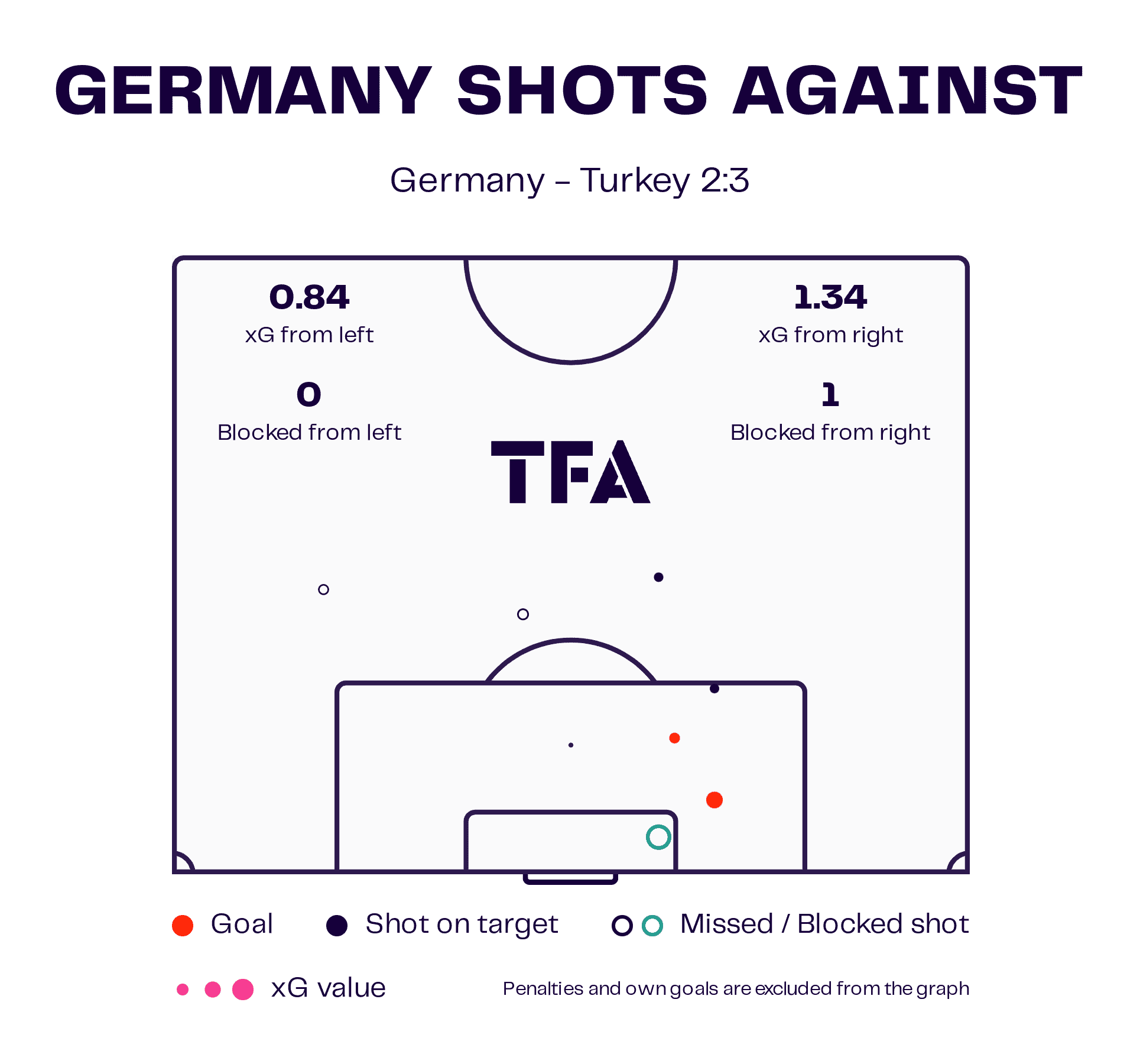
A potential tactical adjustment could have been to position Joshua Kimmich in a full-back role out of possession, allowing Havertz to stay higher up the pitch.
Havertz’s imposing presence and effective pressing abilities are better utilised in advanced positions, and these aspects are somewhat diminished when he drops back into the defensive line.
The match also saw Havertz’s involvement in a controversial penalty decision that led to the visitors’ winning goal.
The interpretation of handball incidents, especially those occurring behind a player’s back, remains a perplexing aspect of professional football.
“Kai said he wanted to do it; he wanted to try it. I don’t see this as a risk for him but as a very, very big opportunity to play a decisive role at the European Championships. He did very well for the first time in an unfamiliar position and was probably our best player. He’s a player who can play in different positions, and he’s very good with the ball,” said national team coach Julian Nagelsmann.
Havertz expressed satisfaction with his performance at left back and indicated his willingness to play in that role again in future games: “I felt good in the position,” Havertz said. “I’m always willing to play where the coach needs me, and I think I can play well there.”
Havertz is poised to see increased playing time in his newfound position ahead of the UEFA Euro 2024 in Germany.
However, a notable concern revolves around his primary strength, which lies in finding space in advanced areas.
This skill demands a certain level of risk-taking and a sense of freedom.
When deployed as a wingback or central midfielder, his defensive responsibilities increase, potentially impacting his attacking assertiveness.
Kai Havertz Radar Map At Arsenal
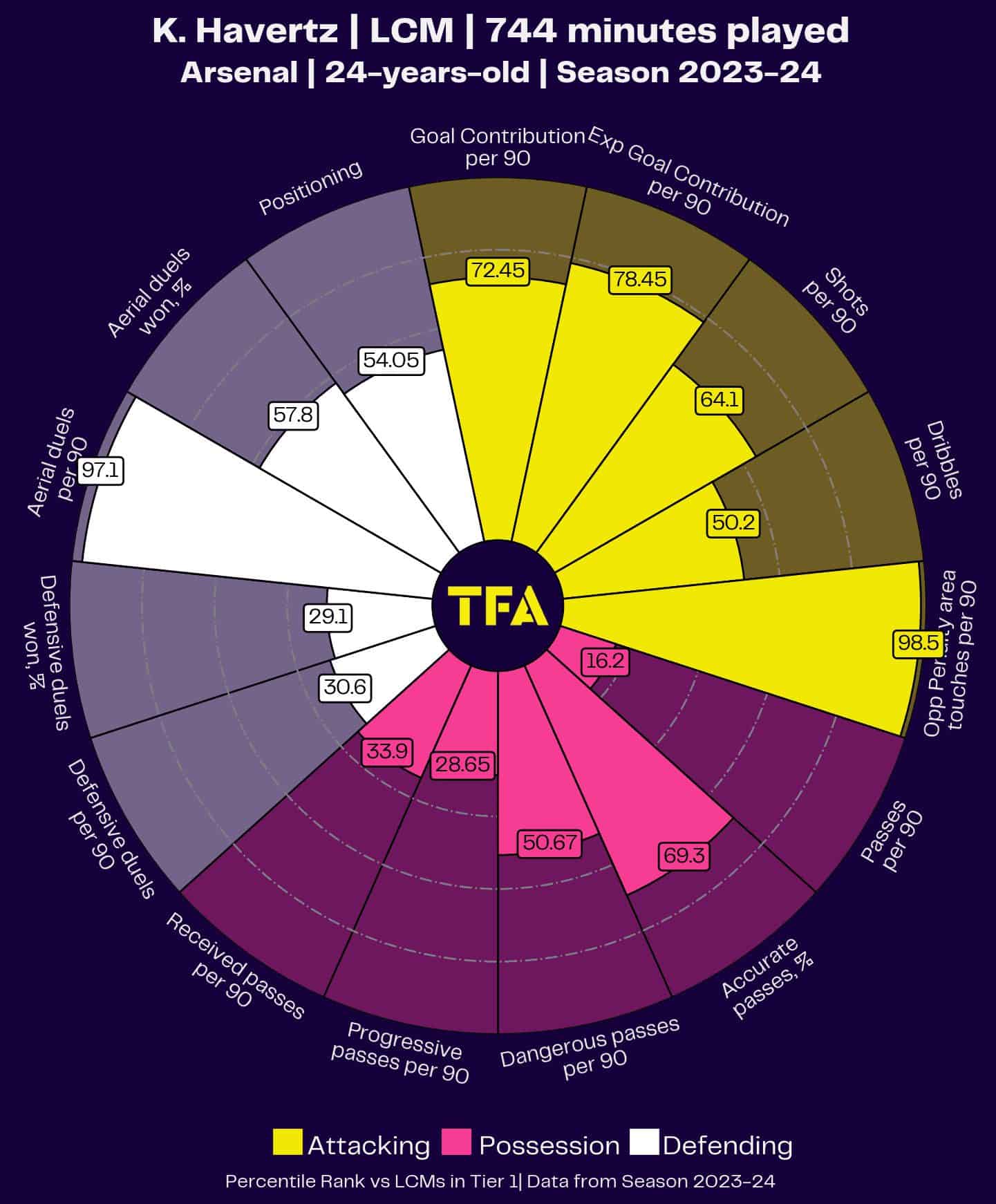
Maintaining Havertz’s confidence and sense of freedom is crucial to ensure consistent aggression when making deep runs into the box.
While he has showcased this aspect well at Arsenal, if he operates with complete confidence, there might be room for an even more audacious display.
Kai Havertz Position At Arsenal
It’s doubtful that Arsenal manager Mikel Arteta would draw inspiration from Julian Nagelsmann, considering Kai Havertz’s recent role in the German national team.
Though one might envision him in a defensive role, in reality, his position was more advanced, a role he also played during Arsenal’s pre-season this year.
During the pre-season, Arsenal experimented with Havertz and Leandro Trossard in wider positions.
Havertz’s effectiveness is notable when receiving the ball with an open stance oriented towards the goal, which makes him more comfortable on the right side of the pitch than on the left.
However, contemplating a tactical shift, Havertz could potentially fill the left-back role for Arsenal.
Considering Arsenal’s left-back injury issues, Havertz, known for his durability, might emerge as a practical solution.
While most of the team might remain unchanged, adjustments in the midfield could be seen.
Due to his struggles this season, Martin Odegaard could potentially make way for new players like Ruben Neves or Florian Wirtz.
There’s also the chance of a new addition up front for Arsenal.
Conclusion
This discussion echoes the past scenario when former German national team coach Joachim Löw was figuring out how to integrate Toni Kroos into his system.
Back then, Löw made the unforgettable tactical misstep of deploying Kroos as a winger against Italy at Euro 2012.
Nagelsmann will be keen to avoid repeating mistakes like this, but experimentation is routine for a coach.
We can be particularly confident of observing it in games that carry lower stakes, such as this international friendly — it’s certainly a much more sensible environment for such experimentation than in a major tournament, we’d say!
Determining Havertz’s right position is of utmost importance, and the coach will have gained invaluable information from this experiment.
Despite occasional struggles at the club level, the 24-year-old’s talent is undeniable, making his inclusion in Nagelsmann’s plans essential.
The sooner they find exactly how to extract the most out of the player, the better for Nationalelf.





Comments